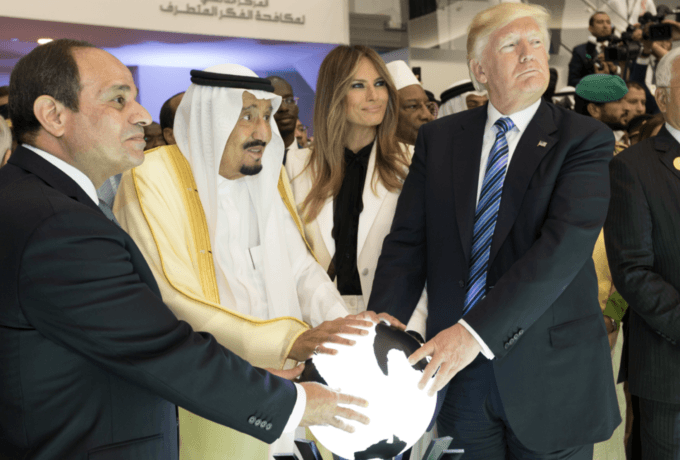by DARAGH COGLEY

“I’m going to Saudi Arabia. I made a deal with Saudi Arabia. I’d usually go to the U.K. first. Last time I went to Saudi Arabia they put up $450 billion. I said well, this time they’ve gotten richer, we’ve all gotten older so I said I’ll go if you pay $1 trillion to American companies, meaning the purchase over a four-year period of $ 1 trillion and they’ve agreed to do that. So, I’m going to be going there. I have a great relationship with them, and they’ve been very nice but they’re going to be spending a lot of money to American companies for buying military equipment and a lot of other things.” – President Donald Trump, 7th March 2025.
What is the true importance of the US-Saudi relationship in the global economy? It’s based on the two things that make the economy go round – money and oil.
The United States–Saudi “petrodollar” arrangement has underpinned American economic and military power for nearly five decades. In essence, oil exports from Saudi Arabia (and later OPEC broadly) have been priced in U.S. dollars since the 1974, ensuring a constant global demand for the dollar and U.S. Treasury assets. This monetary system forms the hidden backbone of a web of consequences – from U.S. imperialism and geopolitical maneuvering to environmental degradation and extreme wealth accumulation. Today, roughly 80% of global oil transactions are still conducted in USD, illustrating the petrodollar system’s enduring influence. Below, we analyze the historical origins of the petrodollar, explain how this monetary system became a root cause linking finance to geopolitics and ecological crisis, and discuss proposed alternatives like Modern Monetary Theory (MMT) that could break the cycle.
Background
In the aftermath of World War II, the Bretton Woods system (1944) established the U.S. dollar as the world’s anchor currency, pegged to gold, which cemented U.S. economic dominance. However, by 1971 the U.S. faced mounting trade deficits and dwindling gold reserves, as countries sought to trade USD for gold they didn’t have, US President Nixon ended dollar convertibility to gold – a move that threatened the dollar’s supremacy. The solution emerged via oil: in 1974, one year after the oil crisis, Washington and Riyadh struck a pivotal deal (kept secret until 2016) that ensured Saudi oil would be priced exclusively in dollars. In return, the U.S. provided military protection and lucrative arms sales to Saudi Arabia, and Saudi leaders would recycle their oil revenues into U.S. Treasuries and American investments. This U.S.–Saudi arrangement laid the foundation of the petrodollar system, firmly tying the world’s most traded commodity (oil) to the American currency.
Counterpunch for more
